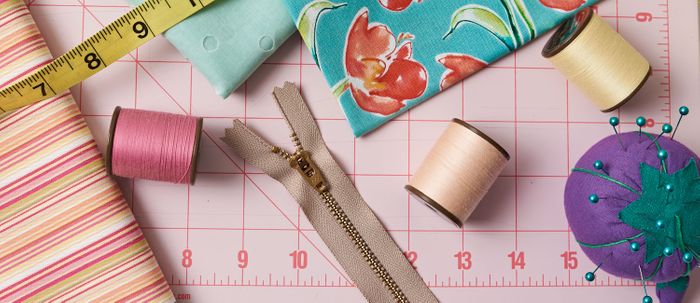How to Sew French and Lapped Seams
These seams finish themselves and keep your project looking neat
When you sew a basic seam, you may need to take an additional step to “finish” the seam allowances. Learn how to sew two seams that finish themselves: French seams and lapped seams. Finishing the seam allowances’ raw edges may prevent them from fraying and keep your project looking neat on the wrong side.
French seams are often applied to sheer or lightweight fabrics because the seam treatment is clean and narrow. French seams are neatly finished because the raw edge is enclosed between fabric layers. This seam treatment does not require you to adjust your pattern’s seam allowances. It may work best on long, straight seams.
Lapped seams are typically used with bulkier fabrics that will not ravel. Watch and learn how to lap the pieces along the seamline. The next step is to accurately topstitch through the layers for a neat and durable seam.
Once you’ve practiced and perfected French and lapped seams, you’ll find many occasions to apply them in your sewing projects.
Learn more about French and lapped seams in this video, part of the five-season Teach Yourself to Sew series.
Teach Yourself to Sew
Garment sewing expert Judith Neukam got her first taste of sewing when she took the free lessons that came with her mother’s sewing machine purchase. Judith was 9 at the time. Soon after, she was sewing her own clothes and feeding her passion for the craft. In her Teach Yourself to Sew series, Judith shares her enduring love of sewing and her invaluable years of sewing experience.
Getting started
She starts with discussing the equipment and the essential sewing notions for anyone who sews. You’ll learn about shopping for fabrics, choosing patterns (including selecting the correct size), and planning the perfect pattern layout. From machine-sewing simple seams to…






i’m sorry but this just got confusing... you lost me in the (very basic, i’m aware... 😳) terminology whilst describing setting up that first stitch.
can you reiterate...?
thx again for this... it’s amazing. 🙏🏻💕
If you're asking about how to set up the French seam, here are the steps. This assumes your pattern has a 5/8-inch-wide seam allowance.
1. Place the fabric layers with wrong sides together, and edges aligned.
2. Sew the seam with a 1/4-inch-wide seam allowance. Then, trim the allowances to 1/8 inch wide.
3. Fold the fabric with right sides together, placing the seamline you just sewed right on the edge. Press flat.
4. Sew the seam again, this time with a 3/8-inch-wide seam allowance. Press the seam as sewn, then press the allowances to one side.
This encloses the fabric's raw edges within the seam allowances for a clean, non-raveling finish. It's best on straight or gently curved seams.
Carol J. Fresia, Threads Senior Technical Editor